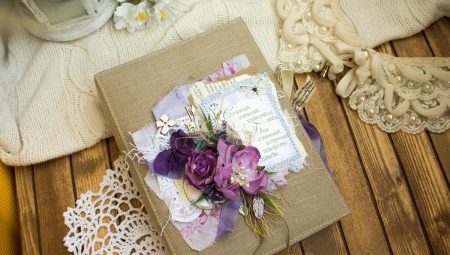Scrapbooking is a relatively new hobby for needlewomen. The name came from the English words scrap and book, which can be translated as a book with clippings. This type of art is used to create and decorate postcards, albums, babybooks and other hande-made products. The most commonly used scrapbooking decoration element is flowers, but, unfortunately, the store selection of ready-made flowers is small and it is very difficult to find the right elements.
Fortunately, such decoration elements are very simple to create with your own hands from improvised materials, limiting yourself to your own imagination.
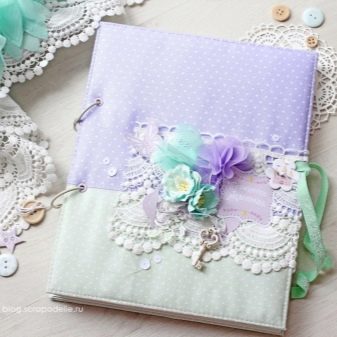

Necessary fixtures
The technique of creating floral decorations for any hobby is a lot. At the same time, different materials are used, starting from plain paper with increased density and ending with fabrics. First you need to decide on the choice of flower that you want to recreate: roses, violets, lilies, daisies or any other flower, even nonexistent in nature.
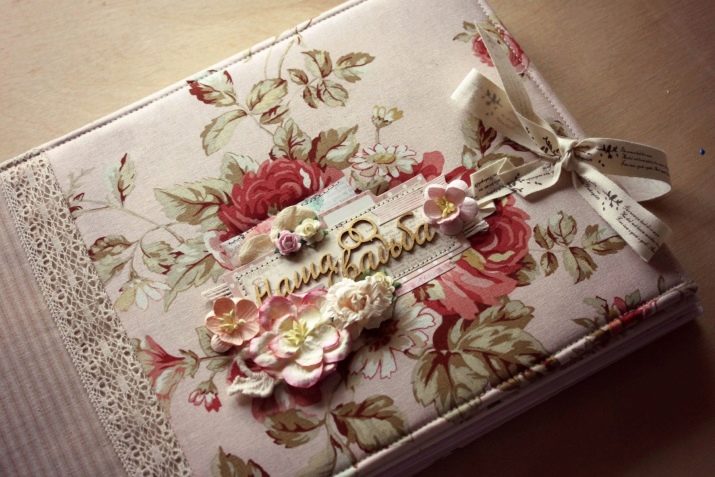
For work, you need a number of necessary tools and materials.
- Scissors or cutter. Cutting tools should be fairly sharp to create the correct shape of the petals. When cutting parts, smoothness of lines and the absence of paper deformation during cutting are very important. It is advisable to have scissors in different sizes so that it is convenient to cut large and small parts. Instead of a cutter, it is better to use a breadboard knife designed for small jobs.
- Scrap paper (if you make flowers from paper). It is better to take paper thick for watercolor or pastel. The choice of paper is very large, you can choose colored or white paper for your work.
- the cloth (to create flowers from fabric).The choice of fabric is limited only by your imagination, but most often they use a light fabric that will not weigh down the overall composition (chiffon, nylon or silk), some techniques use felt.
- Water tank and wipes optional. Many craftswomen advise soaking paper petals in warm water. This gives the flower realism, and even with light coloring of the petals, a wet influx will appear due to wet paper, which will make the flower visually softer.
- Paints. Watercolor is best suited for scrapbooking, but gouache can also be used. They paint in the flowers mainly the edges of the petals, or use the ombre technique to create smooth color transitions on all surfaces of the flower.
- Sponge. When using paints and to create smooth color transitions, it is better to use a sponge that dips into the paint, slightly diluted with water, and with light movements - smooth over the entire surface or intermittent from the edges - is applied to the petals. Different shades can be combined on one side of the sponge, the sponge will provide a smooth transition of colors.
- Stack for modeling with a round end. You can also purchase special bulks for flower arrangements, or take any other instrument with a spherical end. Such tools will help bend the petals, give them volume.
- A variety of beads, rhinestones. They are used in the design of the middle of the flower. The center of the flower can also be made of paper or fabric.
- Glue. Glues can be bought in a narrow direction, there are many of them. But many people use conventional adhesives, for example, Instant Instant glue. For bulky parts, it is best to use gun glue, which can be purchased at any needlework or fabric store, the only drawback of such an adhesive base is its instability to mechanical stress.
- Curly and curb hole punchers. There are a lot of figured hole punchers, choose the pattern or shape you like and decorate and cut beautiful petals.
The curb hole punch performs the same function, except that the patterns are cut from the edges, they can decorate the edges of the petals, making them original.
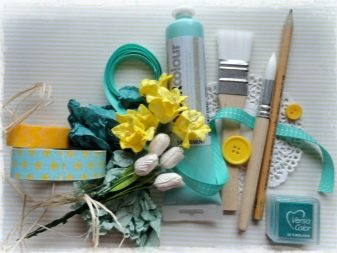
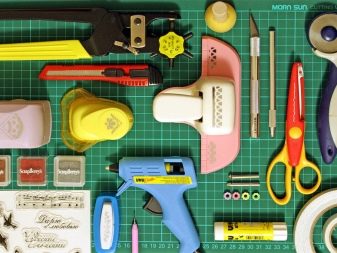
Ways to create
There are different options for creating colors for scrap products, it is worth considering simple options using a minimum number of tools.
Materials for making flowers can most often be paper and fabric, as well as threads and yarn.
To get simple beautiful scrap flowers, just cut five or more petals, while the petals must differ in size, the first petals become larger and gradually decrease towards the center. In the center, you can put a bead or also cut the center out of paper. Petals, in turn, need to be bent to the center, which can be done manually, use a thin stick (for example, a toothpick), or wet the petals in warm water and use a stack with a rounded end.
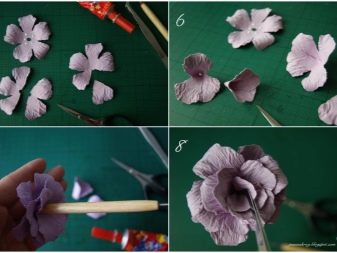
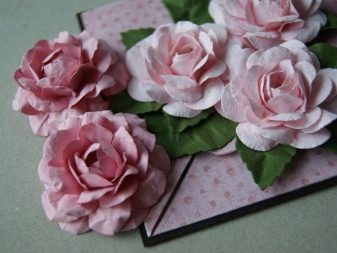
- Rose is the most common flower in scrapbooking. Consider a simple workshop to create such a product. For this you will need a color watercolor paper. You need to draw a spiral on it, square in shape (in the shape of paper), the most difficult part of this technique is the removal of straight lines. You need to cut this spiral with rounded ends, so that there are no right angles anywhere to recreate the shape of the petals.
A blank cut in a spiral, crushing the edges in the hands, is collected in a bag. As a result, you get a rose, you can add a green cup to it, if desired, the stem, twisting a thin rectangle of the desired length into a bag. It turns out a very pretty and easy-to-execute rose.
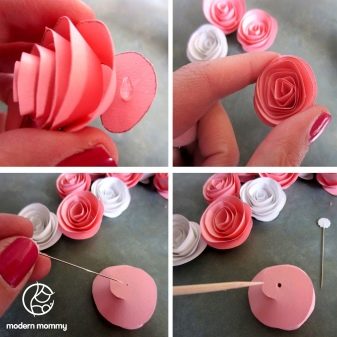
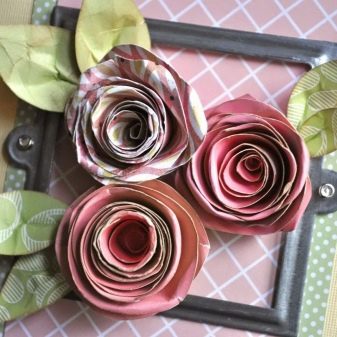
- Royal rose. Another way to create this noble flower from watercolor paper. To do this, we make 6 blanks on paper, 2 of which should be larger in size than the rest. Each blank should have five petals.After you have cut out all the petals, you can paint them with a sponge, creating more natural iridescent shades, then they will need to be rounded off, for this task an ordinary toothpick is suitable for you.
Then all the blanks and petals need to be glued to each other, now you can use the rose for scrap products, it is ready.
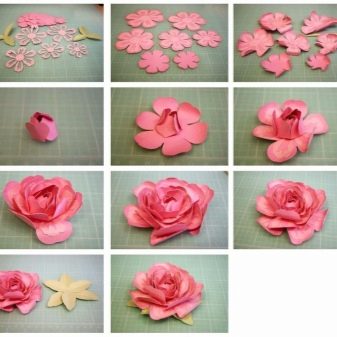
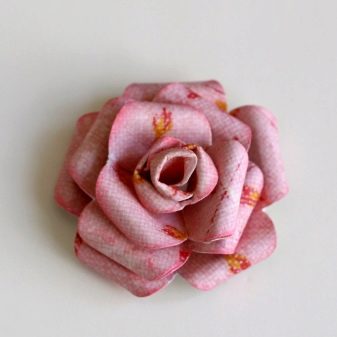
- If you know how to knit, and are friends with threads and knitting needles, then you can use to decorate postcards or covers of books and notebooks knitted flowers.
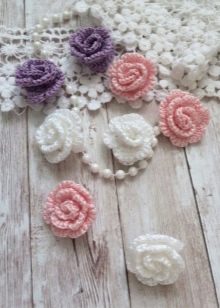
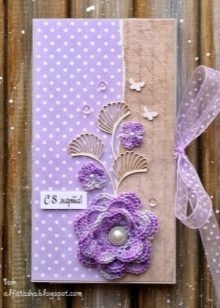
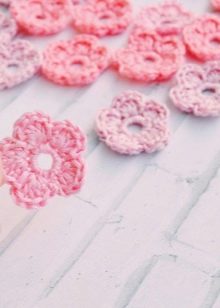
- Flowers from foamiran. This material was created specifically for decoration, it has a foam base and is able to give the flowers a very natural look. The only difficulty of this material is in gluing, ordinary glues do not glue foamiran or, in other words, plastic suede, hot glue or special adhesives are suitable for you.
There are from 20 to 24 colors of this material, it is sold in sheets and can be replaced with acrylic paper.
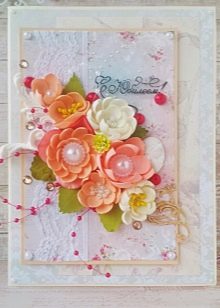
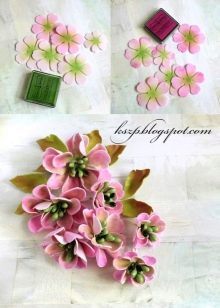

- Fabric flowers. For the manufacture of such products, you will need light fabrics, such as chiffon. You will also need a candle, fabric glue or thread and a needle. Petals and flower blanks are cut from the fabric material you have chosen, the edges of the products will need to be burned a little, they will become rounded and will not bloom in the future. Next, connect the cut and burnt billets with each other and in the center you can sew a bead.

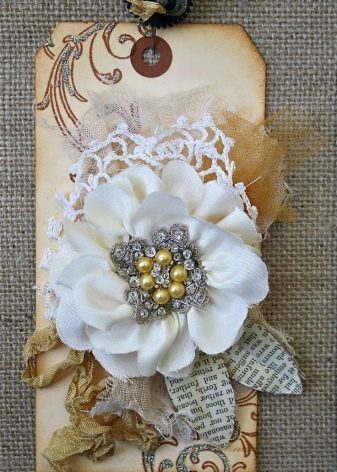
- Floral arrangement in quilling technique. This technique is based on glued curled paper. To do this, you need to cut the paper into strips and twist it in such a way (in a spiral) so that in the end you get a drop shape, then these drops are connected to each other using glue, and in the center they are twisted using the same technique, but a round stigma flower.
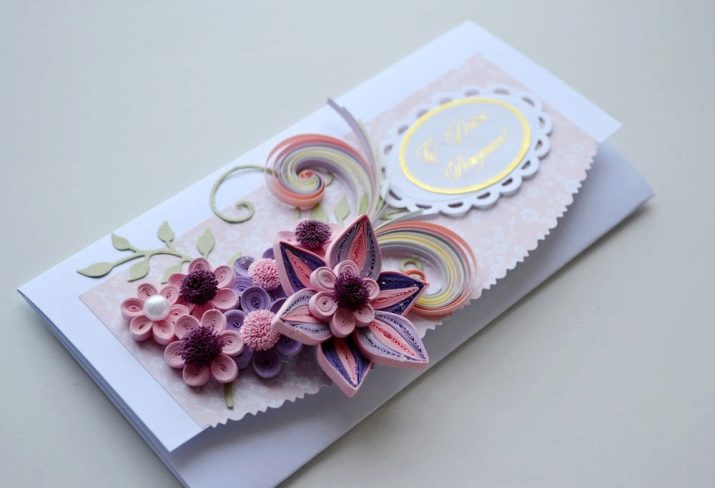
- If you don’t have professional paper at hand, but you need a flower here and now, you can also use an old newspaper or dense napkins. Be very careful if you decide to make a flower from a napkin, the material is very delicate and may tear.
Napkins should not be soaked in water or painted.
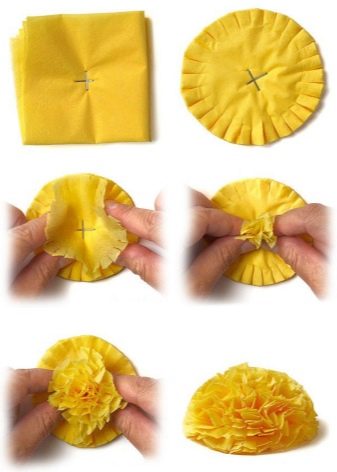

General manufacturing recommendations
If you decide to create a handmade flower, it is important for you to know some nuances. Of course, in the process you will find a technique that is convenient for you and your subtleties, but some errors can be avoided by reading the recommendations.
- When staining blanks with a sponge, be careful. A large amount of paint can spoil the shape of the blanks or give an overly saturated color; it is enough to lean a wet painted sponge a couple of times against the blanks to get the desired delicate color.
- If you decide to paint your workpiece with pencils, then it is worth rubbing the barbed neck on the petal, and not try to draw something by hand.
- Despite the fact that paper is a plastic material, difficulties can sometimes arise with this. You can give it more plasticity by making light, invisible cuts along the edges that you are trying to bend.
- If you do not have professional tools at hand, you can use the helpers. For example, to create the shape of a flower such as a rose, it is enough to take a ruler with different holes, and place the still-moist workpiece in the hole of the desired diameter and wait for drying. The diameters on the ruler should alternate from smaller to larger.
- To create believable stamens, just use PVA glue and semolina. To do this, the edges of the thread twisted on the wire are dipped alternately into PVA glue, and then into the grits, thus the effect of natural stamens is obtained.
- Before creating a decorative flower, you should look at photographs of real flowers in order to better understand color reproduction and give the fake a more natural look. For example, the color of most flowers is darker toward the center and lighter toward the petals.
- The completion of the flower can betray the green base.
- The last, most important rule is that the smoother and more uneven lines of the petals, the more natural it looks.
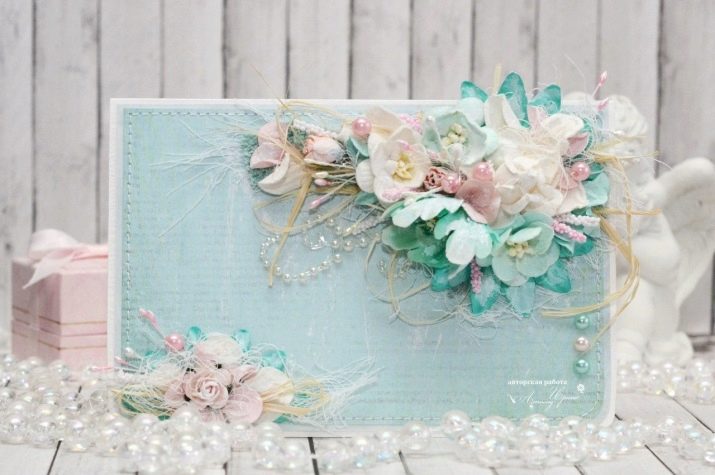
See how to make flowers from foamiran in the next video.
